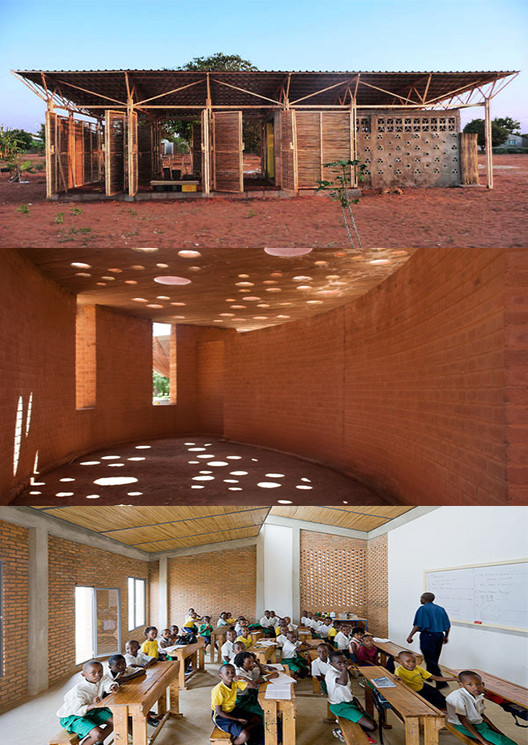
The following article is presented by Materials, ArchDaily's new US product catalog.
How many times in the last year have you heard 3d printing mentioned? What about double-skinned curtain walls or “smart” buildings? High-tech materials almost always seem to dominate the conversation - at least in architectural circles. But using the latest invention in material technology usually does not make a building “innovative.” More often than not, it just makes it expensive and flashy.
Low-tech materials like lumber, stone and brick, on the other hand, are often overlooked, even though the use of local and locally produced materials offers the lowest possible carbon footprint. And while these common materials may seem boring, with a bit of imagination and technical skill, an architect can transform these materials into something fresh. With that in mind, check out three truly innovative projects which use low-tech materials in different and exciting ways.

School Library Gando / Kere Architecture
In Burkina Faso, Kere Architects worked with the local village to create a school library. Clay pots were used as a roofing material, allowing light to pass through and air to circulate. The second material is eucalyptus wood, which is normally used for firewood in Gando, the city where the project is located. These simple transformations created a place where children have a shaded and ventilated space for learning.

Educational Building In Mozambique / Bergen School of Architecture Students
In Mozambique, students from the Bergen School of Architecture designed an educational building that is functional as well as aesthetically pleasing. In the project, bottles replaced expensive windows and straw was used for outdoor rooms. The only “traditional” form of construction was reinforced concrete walls, which were used to house computers and keep them safe from burglars. The highlight of the project is a rainwater collecting roof and cistern made from corrugated iron sheets. All of this was achieved for under $8,500 USD.

Umubano Primary School / MASS Design Group
In Kigali, Rwanda MASS design group designed Umubano Primary School into the natural topography of a hillside. Local artisans and craftsman were used throughout the process because of their local material knowledge. To limit transportation costs and engage local markets, papyrus reeds and brick were used - rather than sourced from the outside. This manufacturing and harvesting of local resources kept money within the community, spurring the local economy.

These three projects show us how local, common materials can become more than the sum of their parts. The materials even act as economic stimulants that provide jobs in production, manufacturing, making and building. What’s more, in all of these projects, the building integrates with the local culture and becomes a part of the place and people, standing as more than just an object. Locals, artisans and craftsman take pride in their work and that is what creates timeless, beautiful, low-tech architecture.
Interested in more Materials? Check out our new US product catalog Materials.














